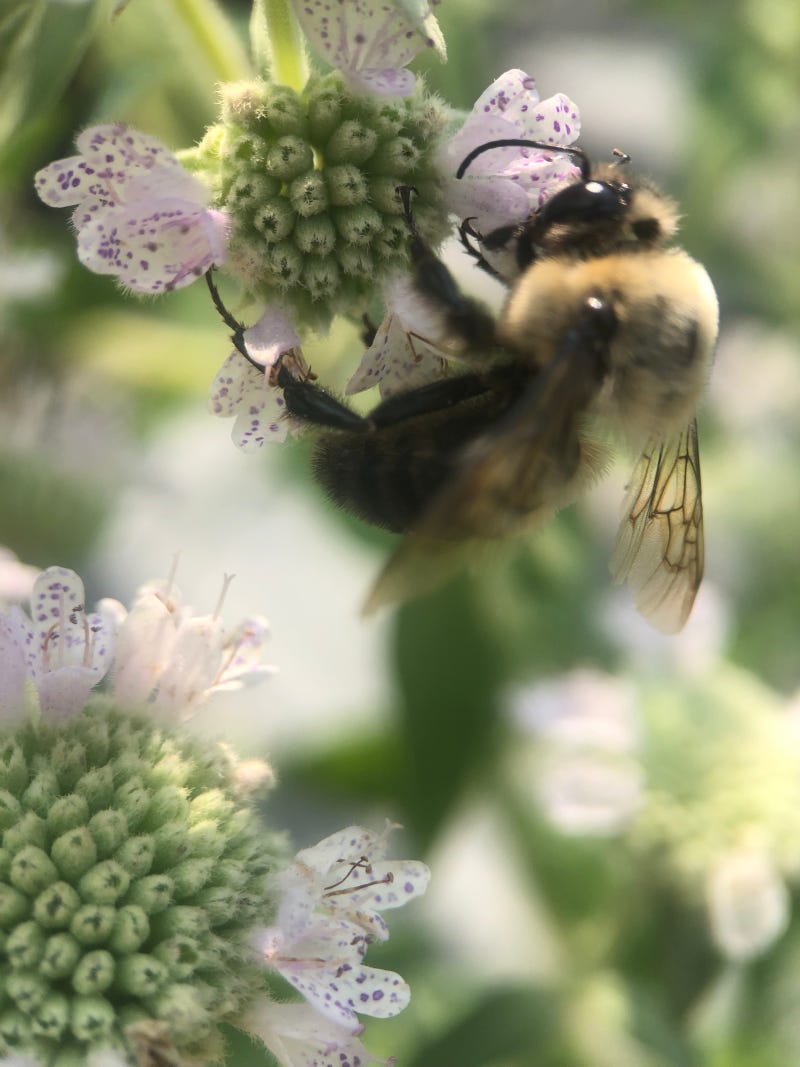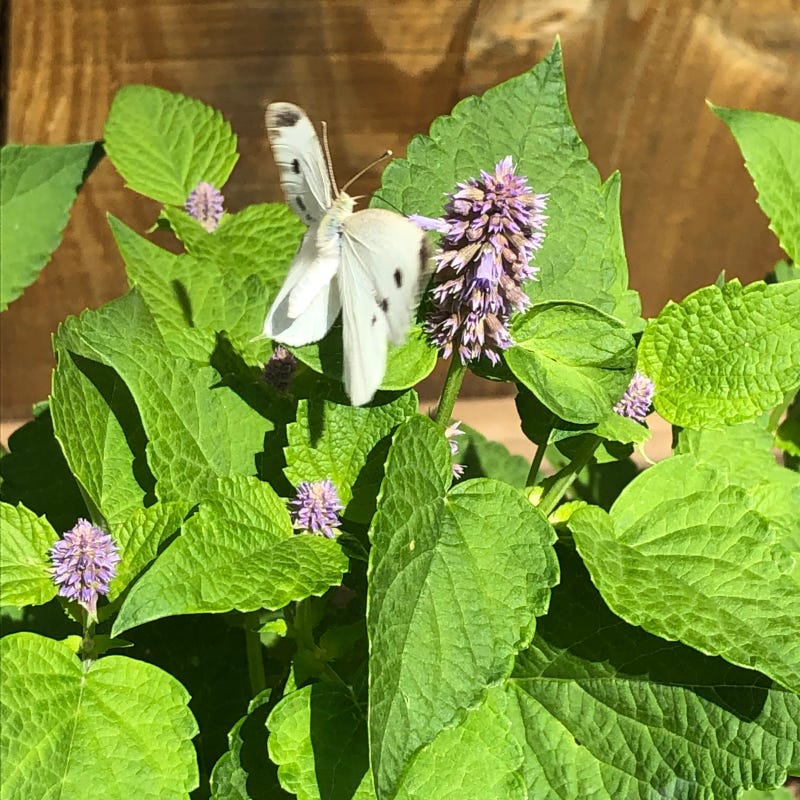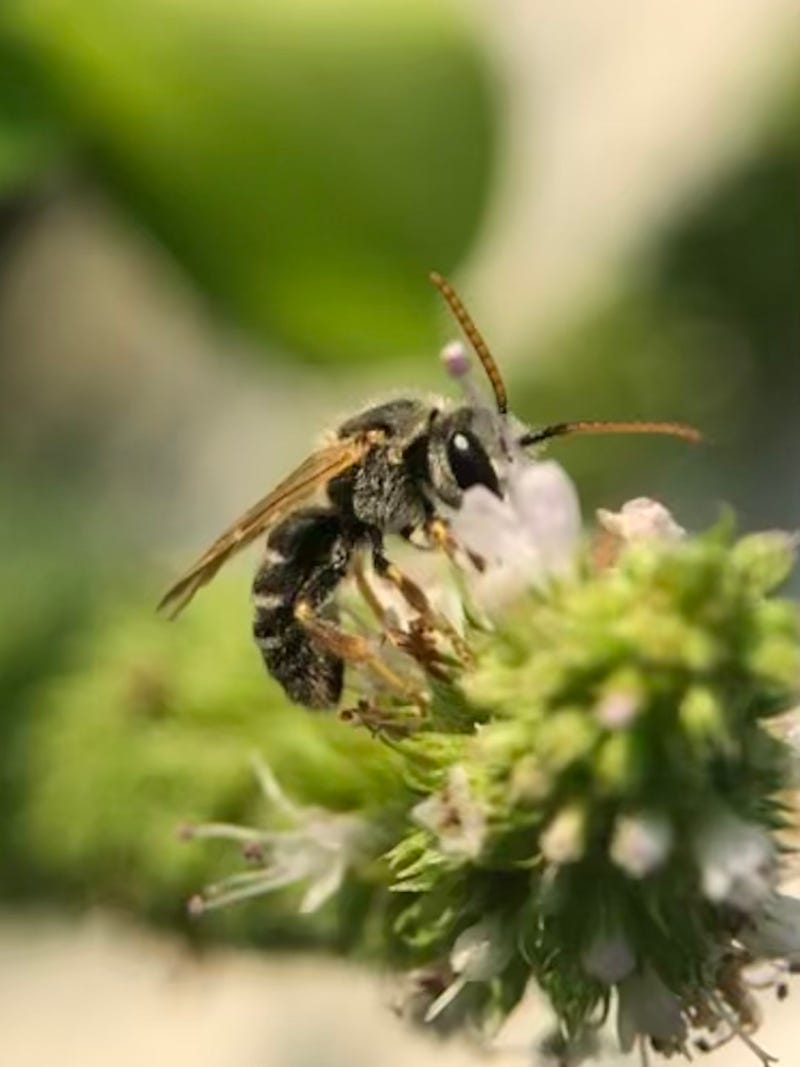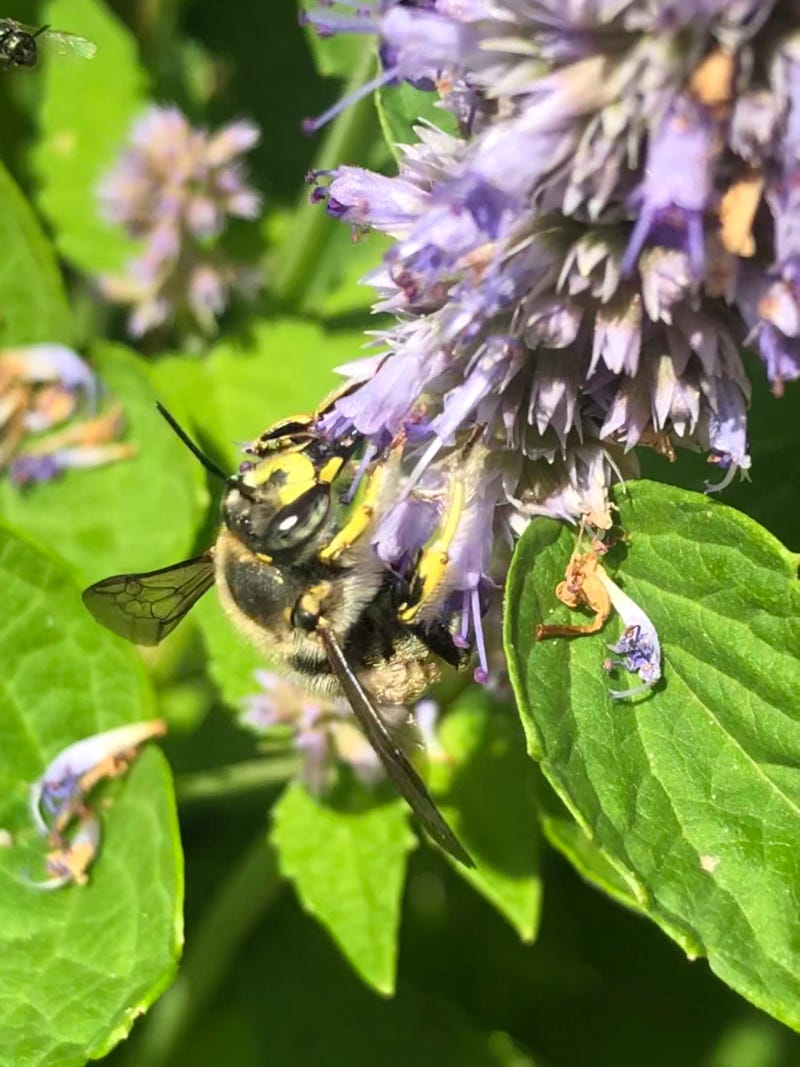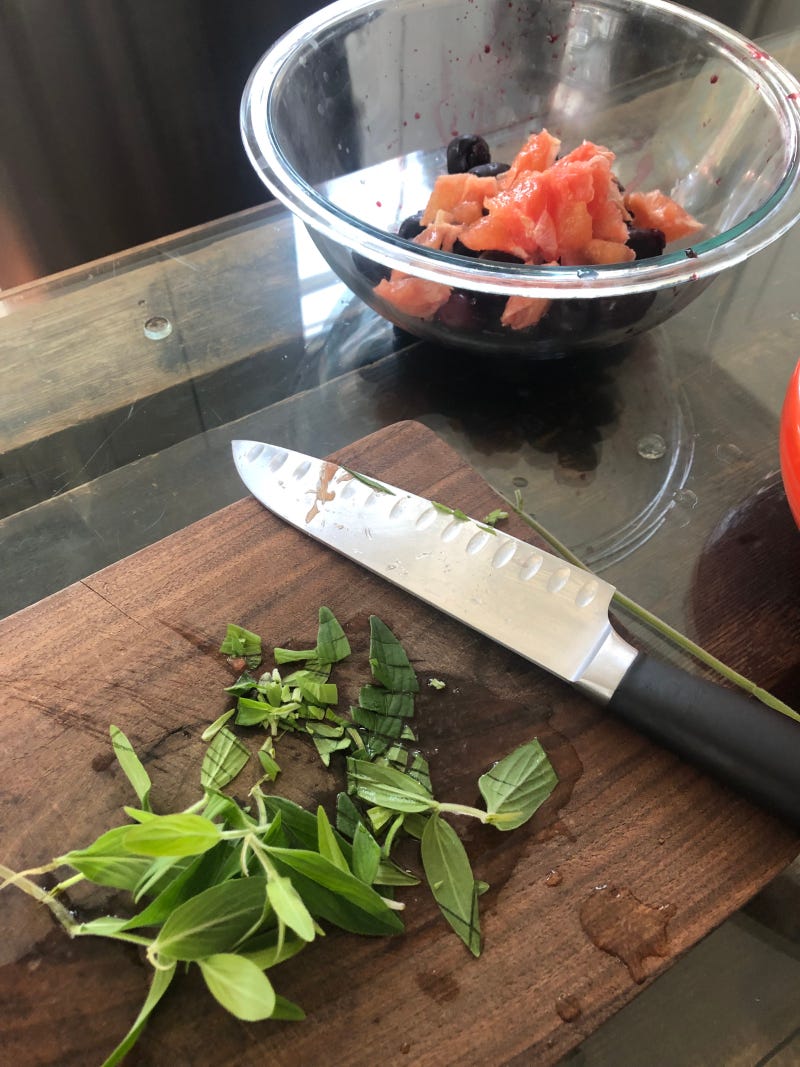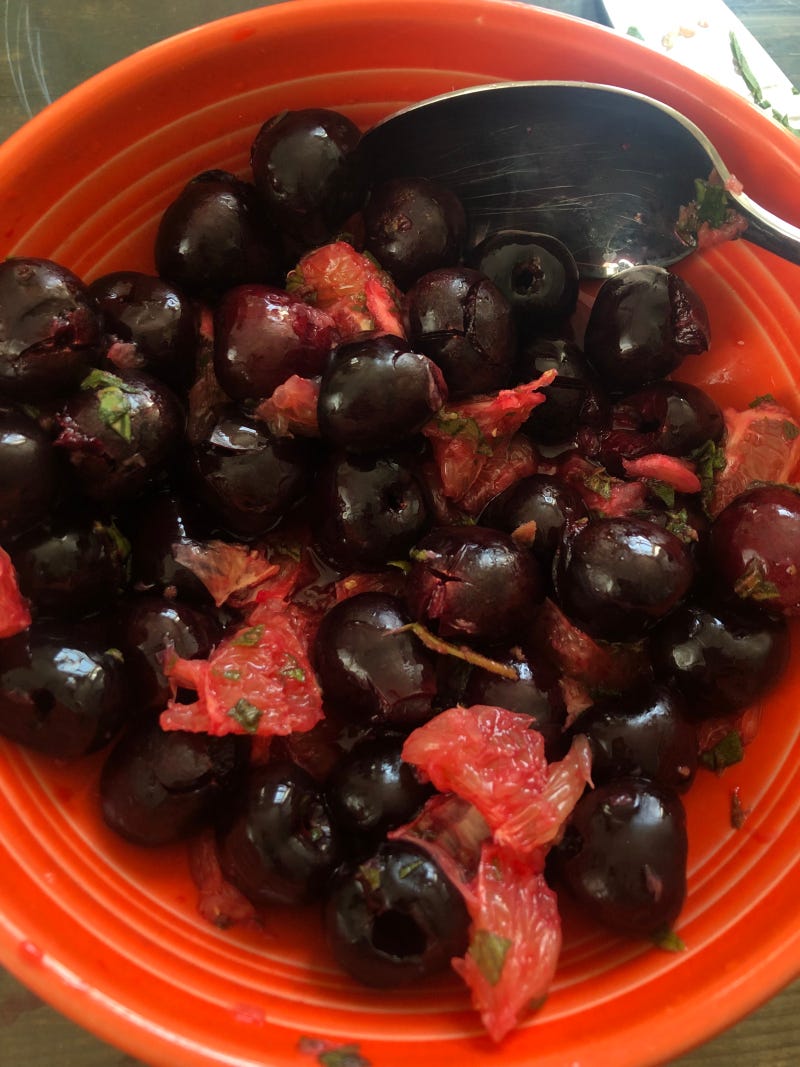Mountain mint and hyssop 'licorice'
Two must-have North American natives for the home garden.
By Lisa Brunette
I’m so full of enthusiasm for these two beautiful herbs that I hardly know how to start talking about them. They tick just about every box on the list! What are they?
American mountain mint, or Pycnanthemum pilosum (above left)
Anise hyssop, or Agastache foeniculum (above right)
Regular readers of this blog know I’ve talked previously about “stacked functions,” which is a permaculture term for a plant with multiple (or stacked) uses, ranging from replenishing your garden soil to serving as your next meal. Both mint and hyssop excel in this area. But even if you’re not into that permie stuff, you should know that these plants are the gifts that keep on giving... and giving.
They’re Easy to Grow
If you’re gardening with the intent to use more natives in your landscape, look no further. American mountain mint is native to the eastern and central regions of the United States, including my home state of Missouri. Anise hyssop is native to the upper Midwest and Great Plains.
The number one reason to opt for native plants is actually this one: They’re so easy!
All you have to do with both mint and hyssop is plant them, water them once, and leave them alone. They don’t need fertilizer or even to be watered again if you put them in the right place at the right time. The right place: full sun to part shade. The right time: spring or fall.
I planted the mint in a rocky bed of hardpan clay, flanked by our back porch on one side and a cement path on the other. It’s flourished.
One of the problems we inherited with this house is a long gravel drive that had overgrown with turf grass and invasive plants. Instead of trying to remove a layer of rock underneath a layer of grass, we sheet-mulched over the whole thing and have opted to add only plants that like dry, rocky soil. Anise hyssop loves life there!
Mint and hyssop are virtually disease-free.
Caveat: Such hardy plants can thrive and re-seed themselves with impunity. For us, this has been welcome, as re-seeded plants are free plants. Neither has yet taken over after three years, but one day we might have to cut them back.
They’re Attractive and Aromatic
Mint and hyssop are beautiful plants in the landscape, with attractive leaves and pretty flowers that bloom all summer long. Neither of them “flop over” the way some tall perennial flowers can; they remain erect, sending up gorgeous flower heads (mint) or flower stalks (hyssop). They’re tall plants, ranging from 3-5’ when fully grown.
Both mint and hyssop leaves are soft to the touch and lovely to look at even before the flowers appear. They’re aromatic, too. Mint leaves smell strongly the same way culinary mint does, though it’s a brighter mint, in my opinion. Hyssop smells like licorice.
They Draw and Feed Pollinators
If you haven’t noticed from the images here so far, it’s almost impossible to get a photo of either of these plants without a pollinator photobomb. That’s a great problem to have and the reason many people sign up for native-plant gardening: out of a desire to help boost declining pollinator species.
When mint and hyssop are in bloom, they’ll be thick with bees and butterflies, which in turn pollinate your food plants, if you’re growing those. Hummingbirds also sip nectar from hyssop, and my Shutterbee activity in late summer is usually focused around the action on mountain mint flowers.
You Can Eat Them
I’ve saved the best for last, as mint and hyssop both have a wide range of medicinal, edible, and culinary uses. If I’d known mountain mint was not just suitable as a substitute for the non-native culinary mints—but in my opinion, actually preferable, I wouldn’t have even bothered with the other mints at all! For me, mountain mint has a “brighter” flavor profile, elevating it up above the common culinary mints. I also find that it’s better than the non-natives when used raw in salads because the leaves are softer on the tongue. One of my favorite combos is to use the mint in a salad with grapefruit sections and fresh, pitted cherries.
You don’t have to get too fancy, though; the licorice-taste of hyssop comes through when you simply plunk a stalk down in a pitcher of water and let it sit overnight in your fridge. You can do the same with mint. There’s nothing more refreshing on a hot, summer day.
Though I haven’t tried this yet, some bakers use hyssop seeds in cookies. I have, however, infused butter with mountain mint to bake into chocolate chip cookies, and that’s as good as it sounds.
Hyssop has a wonderful natural licorice flavor and makes a great tea. Mountain mint and hyssop are two of my favorite teas, in fact; though they have a wide variety of benefits on their own, they can also give good flavor to an otherwise bland concoction.
According to herbalist Tammi Hartung, whose books we’ve given away to readers in the past, anise hyssop is good for colds and the flu, the immune and lymphatic system, and the digestive system, including the liver and intestines1. I find hyssop tea soothing for a sore throat and cough, and it has been used as an ingredient in cough drops.
With their ease of growing, attractive qualities in the home landscape, support for pollinators, and domestic use, mountain mint and anise hyssop are powerhouse plants for the home gardener, especially if you live in North America. So if you had to choose two plants for your garden this year, let it be native mint and hyssop. You won’t be sorry you gave them a home.




